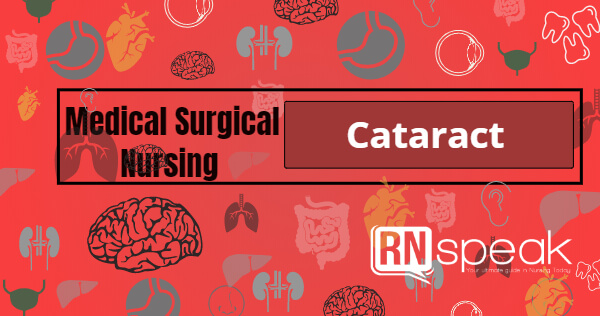Cataract is a disorder that causes the lens or its capsules to lose its transparency or become opaque.
Cataracts are made from a protein that has altered from its natural state, distorting and eventually prohibiting required light from entering into the retina, the part of the eye that receives light. Often cataracts cause no problems for many years but as cataracts mature the cloudiness increases on the lens, the light reaching the retina decreases, and significant sight loss and perhaps blindness can result.
Most leading cases of blindness among adults in the Philippines are due to untreated cataracts. Treatment is simple and effective yet is not readily available or affordable for those living in rural areas.
Clinical Manifestation
Characteristically, a patient with a cataract experience painless, gradual blurring, and loss of vision. As the cataract progress, the normally black pupil appears hazy and when a mature cataract develops, the white lens may be seen through the pupil. Some patient complaint of:
- Blinding glare from headlights when they drive at night
- Poor reading vision
- Unpleasant glare and poor vision in bright sunlight.
Patients with central opacities report better vision in dim light than in bright light because the cataract is nuclear and as the pupils dilate, patients can see around the lens opacity.
Diagnostic test
- Slit-lamp examination confirms the diagnosis of lens opacity
- Visual acuity testing confirms the degree of vision loss
- Retinal examination allows the physician to assess the back of the eye after the pupils are dilated. Using an ophthalmoscope,the lens of the eye is examined to determine the degree of cloudiness.
Medical Management
Surgical
Treatment for cataracts is the surgical removal of the lens. Surgery is indicated when significant vision loss has occurred. The Lens may be removed by Intracapsular and Extracapsular
- Intracapsular Cataract Extraction– The ophthalmologist removes the entire lens from the intact capsule. This procedure is seldom performed
- Extracapsular Cataract Extraction- The anterior lens capsule and cortex are removed.This procedure is commonly used in patients of all ages.
Nursing Intervention
- Prepare patients for cataract surgery as appropriate.
- Approach patient with a decreased field of vision on the side where visual perception is intact.
- Teach the patient to turn and look in the direction in the defective visual field to compensate for the loss.
- Provide comfort measures and Establish a therapeutic relationship with the patient.
- Allow the patient to express his fears and anxieties about his visual loss.
Patient Teaching
- Tell the patient to avoid activities that increase intraocular pressure such as straining.
- Urge the patient to protect the eye from accidental injury at night by wearing a plastic or metal shield with perforations,a shield or glasses should be worn for protection during the day.
- Advise the patient to watch for and immediately report complications such as sharp pain in the eye that’s uncontrolled by analgesics this can be caused hyphema(a clouding in the anterior chamber) and may herald an infection.








